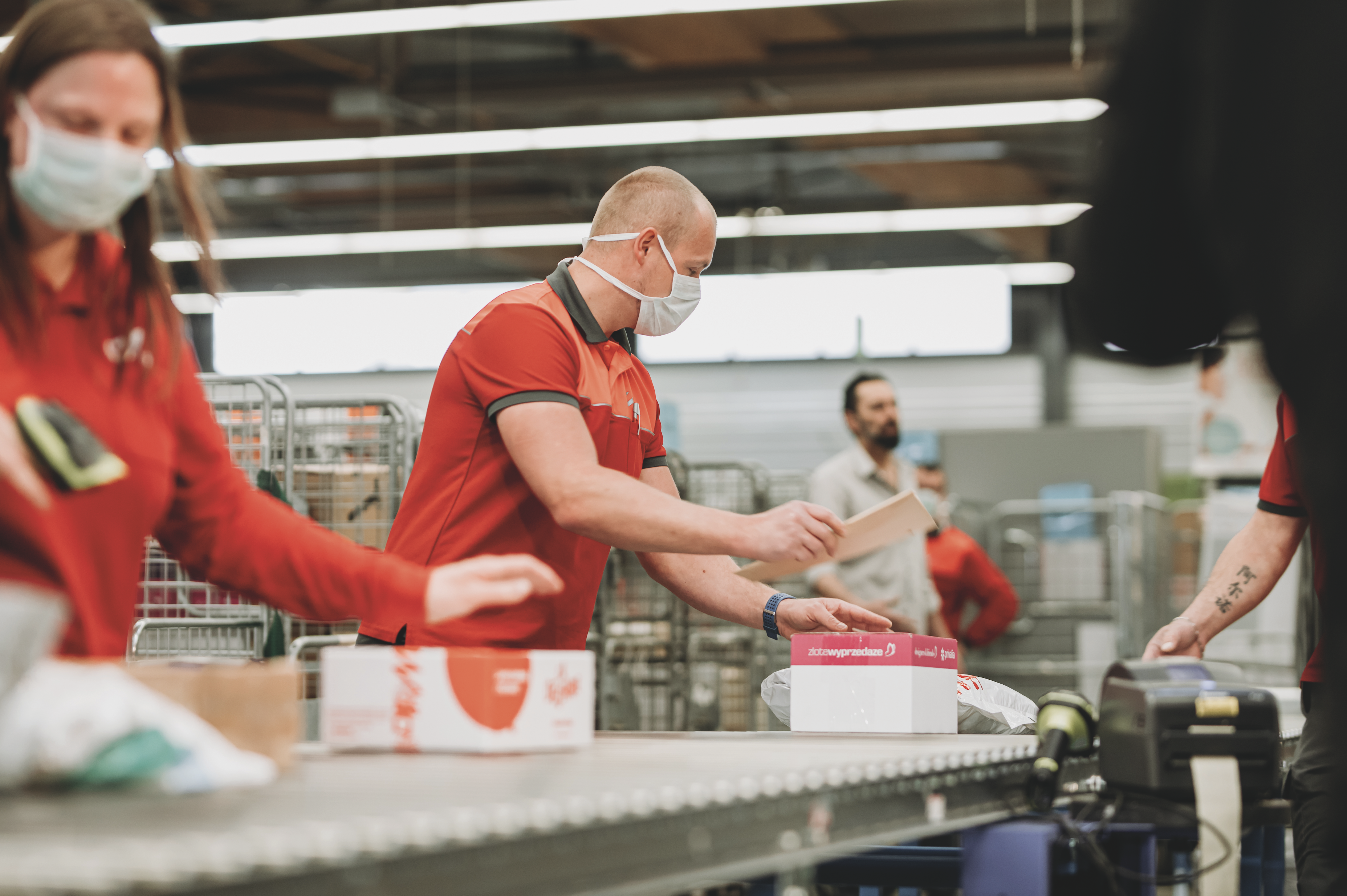One of the major impacts of the coronavirus has been a boom in e-commerce globally. According to
analysis by financial services company ACI Worldwide, global e-commerce sales in June 2020 were 28% higher than in June 2019, continuing a trend that began in March when much of the world’s population was forced indoors in a bid to halt the spread of the virus.
But while this increase in online benefited many of the larger retailers and e-commerce companies, other retailers lost out – most notably small and medium-sized businesses (SMEs), a lot of which were ill-prepared for the sudden transition to online selling.
“During the pandemic the number of parcels being delivered more than doubled, but the big growth was not from SMEs, it was from either the big e-commerce players like Amazon and Zalando, or from the big retailers that had the capability to switch toward e-commerce quickly,” says Michel Defloor, vice president for marketing in parcels and logistics at Belgium’s national postal operator, bpost.
SMEs have traditionally been playing catch-up when it comes to migrating their businesses online. But according to Defloor, the problem is particularly acute in Belgium where e-commerce generally has caught on less than in neighboring countries, in part because Belgium’s small size and largely urban population has meant that most retail is still easily accessible by foot or by car.
Off-the-shelf support in Belgium
As Belgian SMEs saw their revenues disappear overnight, they reached out to bpost for help. “We were contacted by a lot of SMEs asking, ‘Can you help us in developing an e-commerce capability?’” says Defloor. Bpost was at first surprised by the request since there already existed a number of services, offered by the likes of Google and Shopify, to help businesses do just that.
But when Defloor and his team looked into it they saw that a lot of the existing services, many of which were offering a complete digital solution for businesses, were far too complex for many of the SMEs’ needs.

“It was overkill,” he says. “In the context of the pandemic, what these SMEs were looking for was not some super-optimal website with digital marketing, etc. Instead, they were looking for a quick win. They wanted a very off-the-shelf solution that was easy to implement.”
Partnering with Belgian online shopping platform Shopitag, bpost created Touslesmagasinsenligne, a no-frills solution that enables customers to set up a webshop in 30 minutes. The platform, which translates to English as ‘Every shop online’, enables online payments and advertising on social networks and has a customer helpline staffed by experts from bpost and Shopitag.
“It was really about filling a very specific niche that these companies were looking for and doing it quickly,” notes Defloor.
Touslesmagasinsenligne was launched in June and in its first two weeks more than 100 Belgian SMEs opened webshops via the platform, Defloor notes. The majority of the take-up has been from small retailers rather than food and beverage businesses, in particular clothing and hardware stores, the latter helped by a boom in DIY during the lockdown.
Marketing SMEs with An Post
Retailers have also been the main responders to the suite of services that Irish postal operator An Post made available to Irish SMEs in the wake of the pandemic, according to Julie Gill, commercial marketing director of mail and parcels at An Post. As in Belgium, Ireland’s business landscape is dominated by SMEs. “They are the lifeblood of the Irish economy,” notes Gill.
Because of their importance An Post began internal discussions early on during the lockdown on how best to help them. The result of these discussions was a commitment in May of €2m (US$2.3m) to support Ireland’s SMEs.
Half of the funding went toward setting up a €1m (US$1.1m) marketing fund offering SMEs the chance to access €1,000 (US$1,142) grants to be used for direct mailing for marketing purposes. “The direct mail grants were set up because we understood that a lot of the smaller SMEs don’t have huge marketing budgets in comparison with some of our bigger business customers,” says Gill.
The grants were allocated on a first-come, first-served basis and proved so popular that the fund was exhausted within six weeks of its launch, according to Gill.
“It attracted a number of different types of businesses – from hairdressers to architects, accountants to butchers. A lot of the time they used the mail-outs to communicate the changes to their business during and post-lockdown,” she says.
The other services offered to SMEs included a 25% discount on An Post parcel services for the duration of the pandemic and a dedicated e-commerce advice hub hosted on the An Post website providing information and expert tips on how to start trading online.
Though the measures in support of SMEs were in response to the immediate impact of the pandemic, Gill hopes that in the long term it will open the door for Irish businesses to fully take advantage of the benefits of online selling.
“We see online as a complement rather than in competition with brick-and-mortar stores,” says Gill. “Online offers the chance to open up your customer database to more than just your locality, giving you the chance to sell domestically in Ireland and then internationally.”
Going cross-border
The extra revenue stream offered by expanding into foreign markets was behind a recent initiative in Singapore to help SMEs grow their online presence. Known as Grow Digital, the initiative was launched in June by the city-state to link up SMEs with pre-approved e-commerce platforms and digital solution partners in a bid to help them expand into neighboring countries in the Asia-Pacific region.
Logistics multinational DHL also sees cross-border as the biggest e-commerce growth area for SMEs. According to DHL’s own analysis over the past five years, “international e-commerce has been growing at twice the rate of domestic e-commerce”, a growth rate that has only been accelerated by the Covid-19 crisis, according to Leendert van Delft, vice president of sales programs and digital marketing globally for DHL Express.
In response to this trend, DHL has developed a program to support SMEs doing business internationally. Known as Power Up Your Potential, the program offers businesses targeted advice on how to make the most out of cross-border e-commerce.

In developing it, notes van Delft, DHL carried out extensive research of the e-commerce market, studying the major players to understand the reasons for their success as well as consumer trends and habits, finally sharing their findings “with the SME market in order to make their online store as open as possible for the cross-border consumer and increase their international sales”.
One insight that came out of the analysis of consumer habits was the importance placed on overseas shipping options. “Based on our research, we found that 91% of consumers were actually looking for the available delivery options before reaching the checkouts,” says van Delft.
Despite this, van Delft found that their SME clients were often failing to foreground delivery options on their online sales channels. “They were focused a lot on their products, their pricing or having the most fixtures on their websites,” says van Delft. “But we saw, and actually still see, that they were not using the shipping information to attract more customers and to increase conversion rates. A lot of the time they were hiding this information in the footer of their website or only displaying it at the checkout.”
Future strategies
Insights like this found their way in to a 10-point website health check that DHL created as part of the Power Up Your Potential program. Another facet of the program involves using market intelligence data to provide SMEs with targeted advice on cross-border strategies.
“We use data from website traffic or for specific product demand to spot where the opportunities are for our SME clients,” van Delft says. “An example could be a company that sells apparel for the fitness industry. We might be able to say to the client, ‘We see that there’s a lot of demand for your products in India or in the USA but that you’re not yet selling to those regions.’ We can then analyze the data to calculate the potential volumes for cross-border e-commerce sales to those markets.”
DHL’s next step is to expand the program to take in business-to-business clients, which van Delft believes have traditionally lagged behind other SMEs in developing their online presence.
Meanwhile, bpost too is looking to expand its Touslesmagasinsenligne product, aware that the changes wrought by the pandemic on the business landscape are likely to be long-lasting. Defloor says, “Some of the SMEs that are coming to us today are motivated by the concern that they need to have some kind of insurance against a second wave of the virus. But if that’s the only reason they are doing it, they are under-estimating the long-term impact that the pandemic will have on the shift to e-commerce.”
To illustrate his point, Defloor notes that while the lockdown has now ended in Belgium and the shops have reopened, e-commerce levels are still at “75% above the pre-pandemic volumes”.
While part of this can be explained by nagging fears about transmission of the virus, says Defloor, these stats also show that, “Society has adapted itself to e-commerce and having some kind of digital channel for SMEs is very important, independent of whether there will be a second wave or not.”
This article was originally published in the September 2020 issue of Parcel and Postal Technology International



